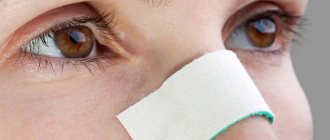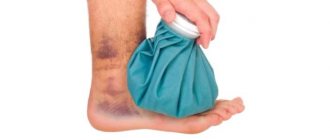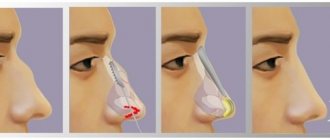Release form and composition
Available in the form of solution and suspension for injection. The solution is packaged in ampoules of 1 ml, 1 and 5 ampoules per box. The suspension is packaged in ampoules or syringes of 1 ml. In plastic cellular packaging - 1 or 5 ampoules, packed in a cardboard box.
1 ml of suspension contains 6.43 mg of betamethasone dipropionate (equivalent to 5 mg of betamethasone) and 2.63 mg of betamethasone sodium phosphate (2 mg of betamethasone equivalent). Excipients:
- water for injections;
- anhydrous disodium phosphate;
- trilon B;
- sodium chloride;
- benzyl alcohol;
- polysorbate 80;
- polyethylene glycol 4000;
- nipazole;
- carboxymethylcellulose sodium salt;
- nipagin.
The solution for injection contains betamethasone: in the form of disodium phosphate - 2 mg, in the form of dipropionate - 5 mg.
Diprospan price, where to buy
The price of 1 ampoule of Diprospan is about 220 rubles. You can buy the drug in Moscow for about 230 rubles.
The price of Diprospan injections in Ukraine is 1100-1600 UAH for 5 ampoules of 1 ml.
How much does an allergy shot cost, for example, in Kharkov? Approximately 250 UAH. In Odessa - 290 UAH.
Tablets of this drug are not sold.
- Online pharmacies in RussiaRussia
- Online pharmacies in UkraineUkraine
- Online pharmacies in KazakhstanKazakhstan
LuxPharma* special offer
- Diprospan amp. No. 1
Pharmacy Dialogue
- Diprospan ampoules 2mg+5mg/ml 1ml No. 1Shering-Plough
Europharm* 4% discount using promo code medside11
- Diprospan suspension for injection 1 ml 1 amp Schering-Plough Labo N.V. (sc)
show more
Pharmacy24
- Diprospan 1 ml No. 5 solution Schering-Plough Labo N.V./Schering-Plough, Belgium/France
- Diprospan 1 ml No. 1 powder SENEXI HSC-EROUVILLE SAINT-CLAIR, France
PaniPharmacy
- Diprospan ampoule Diprospan injection suspension ampoules 1 ml No. 5 Belgium, Schering-Plough Labo
- Diprospan syringe Diprospan injection suspension syringe 1 ml with 2 needles No. 1 Belgium, Schering-Plough Labo
show more
pharmachologic effect
The drug belongs to the group of glucocorticosteroids. The main effect of Diprospan is associated with pronounced glucocorticoid activity; the mineralocorticoid effect is practically not expressed. The action of Diprospan is aimed at suppressing inflammation, allergic reactions, and immunosuppression. Inhibits the function of the pituitary gland.
Diprospan is a medicine that consists of two active components with different rates of action.
One of them is betamethasone sodium phosphate.
— easily dissolves, hydrolyzes and is absorbed after administration, providing a quick therapeutic effect. Discharged within 24 hours.
The other is betamethasone dipropionate.
— after administration, it creates a depot, from where it is released gradually. As a result, a long-lasting effect of the drug is ensured. The time for complete elimination is 10 days or more.
Diprospan crystals are very small, which allows it to be inserted into small joints through a very thin needle.
Diprospan: indications for use
- Rheumatic diseases:
rheumatoid arthritis, bursitis, eosinophilic fasciitis, ankylosing spondylitis, osteoarthritis, epicondylitis, lumbago, exostosis, tendinitis, bursitis against the background of hard callus, stiffness of the big toe, torticollis, heel spur. - Allergic diseases:
bronchial asthma and status asthmaticus, allergic rhinitis, serum sickness, atopic dermatitis, drug allergies, urticaria, allergic reactions to insect and snake bites. - Systemic diseases:
scleroderma, periarteritis nodosa, systemic lupus erythematosus, dermatomyositis. - Skin diseases:
contact dermatitis, insulin lipodystrophy, arthropathic psoriasis, lichen planus, keloid scars, alopecia areata, common pemphigus, diffuse forms of neurodermatitis and eczema. - Blood diseases:
leukemia and lymphoma, transfusion reactions. - Diseases of the adrenal glands:
primary and secondary adrenal insufficiency and adrenogenital syndrome. - Diseases of the digestive tract:
ulcerative colitis, celiac enteropathy, Crohn's disease. - Kidney diseases:
glomerulonephritis, nephrotic syndrome.
Diprospan: contraindications
Absolute contraindications include only individual intolerance to the drug Diprospan.
If long-term treatment is necessary, it is necessary to take into account the presence of concomitant diseases in which it is better to refrain from using Diprospan (relative contraindications):
- severe arterial hypertension;
- diabetes;
- viral and purulent infections;
- osteoporosis;
- vaccination period;
- systemic fungal infection of the skin and mucous membranes;
- stomach ulcer;
- Cushing's syndrome;
- tuberculosis;
- mental illness;
- glaucoma;
- thromboembolic syndrome;
- intramuscular injection for thrombocytopenic purpura.
There are also certain contraindications for administering Diprospan into a joint or periarticularly:
- infectious arthritis;
- periarticular cellulitis with ulcerations;
- infective endocarditis;
- aseptic necrosis in the adjacent epiphyses;
- osteomyelitis;
- treatment with anticoagulants;
- foci of psoriasis at the injection site;
- joint instability;
- diabetes;
- hemarthrosis.
Contraindications for Diprospan
Instructions for use of Diprospan do not recommend prescribing the medication intra-articularly for pathological bleeding, for periarticular infections , for septic and infectious lesions of the joint, for severe forms of periarticular osteoporosis, for general infectious diseases, for intra-articular bone fracture, after arthroplasty , for severe bone destruction, for “ dry joint, with osteoarthritis without signs of synovitis, with instability of the joint after arthritis, with aseptic necrosis of the epiphyses of the bones that form the joint.
Diprospan: instructions for use
For systemic use, it is administered intramuscularly. For arthritis, the best effect is achieved when Diprospan is administered into the joint or periarticularly. For eye diseases, the drug can be administered through the skin in the lower eyelid area. Administration of Diprospan intravenously and subcutaneously is contraindicated!
The dose of the drug in each individual case is selected individually and depends on the disease and its severity. Diprospan is administered to create a drug depot in the body against the background of hormonal therapy with short-acting drugs.
Systemic therapy
The initial dose is 1-2 ml, injected deep into the muscles of the buttocks. Systemically used for the following diseases:
- allergy;
- bronchial asthma;
- allergic rhinitis;
- bronchitis.
Improvement occurs within a few hours after Diprospan injection intramuscularly.
Local administration (Blockade with Diprospan)
In most cases, Diprospan injection does not require the simultaneous use of anesthetics. If necessary, lidocaine can be administered. In this case, you first need to draw Diprospan into the syringe, then lidocaine, and shake thoroughly.
Blockade with Diprospan is carried out in the treatment of the following pathologies:
- osteochondrosis;
- phantom pain;
- tunnel syndrome;
- headaches and facial pain.
In this case, the action of the hormone Diprospan is aimed at reducing pain.
Periarticular blockades (Diprospan is injected into the tissues surrounding the joint) are indicated for bursitis and tendonitis. During these manipulations, the drug is injected into the periarticular bursa, or directly near the tendon, with care not to damage it.
Pharmacodynamics and pharmacokinetics
The medication can inhibit the secretion of FSH and TSH. The drug Diprospan stimulates the production of erythropoietins, increases the number of red blood cells , reduces the number of eosinophils and lymphocytes, and increases the excitability of the central nervous system. When the active component interacts with specific cytoplasmic receptors, a complex is formed that is able to penetrate inside the cell, into its nucleus and stimulate the process of mRNA synthesis (it is this that induces the process of formation of lipocortin and other proteins that mediate cellular effects). Lipocortin suppresses the process of release of arachidonic acid , inhibits phospholipase A2, suppresses the process of synthesis of leukotrienes, prostaglandins and endoperoxides, which are actively involved in inflammatory processes and in the formation of an allergic response. Under the influence of diprospan, the amount of protein in the blood plasma decreases due to globulins , but at the same time the albumin/globulin ratio increases, the production of albumins in the tissues of the kidneys and liver increases, and protein catabolism in muscle tissue increases.
The effect of the drug Diprospan on lipid metabolism: redistribution of fat (fat deposits are localized mainly in the abdomen, face, shoulder girdle), increased synthesis of triglycerides and higher fatty acids, formation of hypercholesterolemia. The effect of the drug on carbohydrate metabolism: activation of phosphoenolpyruvate carboxylase, increased synthesis of aminotransferases (leads to activation of gluconeogenesis), increased absorption of carbohydrates from the digestive tract, increased activity of glucose-6-phosphatase (increases the flow of glucose into the blood from the liver).
The effect of the drug on water-electrolyte metabolism : stimulation of the excretion of potassium ions, retention of water and sodium ions in the body, “washing out” of calcium ions from the skeletal system, decreased absorption of calcium ions from the digestive tract, increased excretion of calcium ions by the renal system. The anti-inflammatory effect is achieved by inhibiting the release of inflammatory mediators by eosinophils; by reducing the number of mast cells (they are the ones who produce hyaluronic acid), inducing the formation of lipocortin, by stabilizing organelle membranes (lysosomal organelles are of particular importance), stabilizing cell membranes, by reducing capillary permeability.
The antiallergic effect is achieved by suppressing the secretion and synthesis of allergic mediators, inhibiting the process of antibody formation, by changing the body's immune response, reducing the sensitivity of effecton cells to allergic mediators, by inhibiting the release of biologically active substances and histamine from mast cells, T-lymphocytes, B -lymphocytes.
For COPD, the drug Diprospan prevents and inhibits the development of swelling of the mucous membranes, slows down the course of inflammatory processes, slows down the deposition of circulating immune complexes in the mucous membranes of the bronchial tree, and reduces the rate of eosinophilic infiltration of the submucosal layer in the epithelia of the bronchial tree. The medication inhibits the process of desquamation and erosion of the mucous membranes. Due to the reduction in production and inhibition of mucus production, its viscosity decreases. Antitoxic and antishock effects are achieved by increasing blood pressure through vasoconstriction, increasing the level of catecholamines circulating in the blood and restoring the sensitivity of adrenergic receptors to them. The effect is achieved through the activation of liver enzymes, which take part in the metabolism of xenobiotics and endobiotics, by reducing the permeability of the vascular walls, as well as due to the membrane protective effect .
The immunosuppressive effect is ensured by a decrease in the rate of release of cytokines (interferon gamma, interleukin-1,2) from macrophages and lymphocytes. The drug suppresses the secretion and synthesis of ACTH, and secondarily inhibits the process of synthesis of endogenous glucocorticosteroids. Under the influence of the medication, the likelihood of scar formation decreases due to inhibition of the speed of connective tissue reactions during inflammation. You can buy Diprospan in the form of suspensions and solution for injection.
How is Diprospan harmful, and what side effects are observed when using it?
When Diprospan is administered, consequences in the form of adverse reactions occur extremely rarely, more often after long-term use. They are mainly associated with inhibition of the pituitary gland.
But there is still a small likelihood of developing side effects that occur with the use of many glucocorticoid hormonal drugs:
- Cushing's syndrome: weight gain, the appearance of stretch marks and areas of atrophy on the skin, acne, osteoporosis, diabetes mellitus, decreased libido and menstrual irregularities, myopathy.
- Growth retardation due to inhibition of pituitary gland function, and disruption of the formation and growth of cartilage, bone tissue and muscles.
- Increases the body's susceptibility to bacterial, fungal and viral infections.
- Ulcerogenic effect. Under the influence of glucocorticoids, the risk of developing ulcers in the stomach and duodenum increases.
- Disorders of the nervous system and psyche. There may be sleep disorder, irritability, euphoria, anxiety, depression with suicide attempts, convulsive seizures.
- Under the influence of glucocorticoid hormones, it is possible to increase blood pressure and develop myocardial dystrophy.
- Ophthalmological diseases can develop cataracts, glaucoma, and corneal perforation due to herpetic lesions of the eye.
- Allergic reactions and anaphylactic shock.
- At the site of drug administration, lesions with disturbed pigmentation, aseptic abscesses, atrophy of the skin and subcutaneous fat may occur.
Side effects of Diprospan
Side effects from the use of the drug Diprospan depend on the ability to comply with the circadian treatment regimen, dosage and duration of use of the medication. Endocrine system: manifestation of latent diabetes mellitus, “steroidal” diabetes mellitus, delayed sexual development in children, Itsenko-Cushing syndrome (myasthenia gravis, amenorrhea, dysmenorrhea , stretch marks, hirsutism , pituitary-type obesity, moon face, increased blood pressure, hirsutism). Digestive tract: loss of appetite, “steroid” ulcer of the gastrointestinal system, pancreatitis, vomiting, nausea, flatulence, hiccups , increased levels of liver enzymes. Cardiovascular system: formation of thrombosis, hypercoagulation , increased severity of CHF, bradycardia, arrhythmia. Nervous system: convulsions, headaches, pseudotumor of the cerebellum, manic-depressive psychosis , euphoria , spatial disorientation , delirium, vertigo, dizziness, insomnia, anxiety , nervousness, increased intracranial pressure, paranoia , depression.
Description of the side effects of Diprospan on the sensory organs: posterior subcapsular cataract, sudden loss of vision, exophthalmos , trophic changes in the cornea, increased intraocular pressure. Metabolism: increased sweating, increased protein breakdown, negative nitrogen balance, increased body weight, hypocalcemia, increased excretion of calcium ions from the body. Musculoskeletal system: osteoporosis, atrophy and decrease in muscle mass, “steroid” myopathy , rupture of muscle tendons, slowing down the processes of ossification and growth of the skeletal system in children as a result of premature closure of the epiphyseal growth zones. Skin: tendency to develop candidiasis and pyoderma, steroid acne, pigmentation disorders, thinning of the skin, formation of ecchymoses and petechiae, slow wound healing. It is possible to form an allergic response, leukocyturia . With intravenous administration, convulsions, “flushes” of blood flow to the face, and arrhythmias are possible.
Interaction with other drugs
Azathioprine, when used for a long time together with Diprospan, can contribute to the appearance of cataracts and myopathy.
Anabolic steroids, delagil, ibuprofen - increase the side effects of the drug. Diprospan reduces the incidence of allergic reactions from antibiotics when used simultaneously.
For glaucoma, it is not recommended to use Diprospan together with antidepressants due to the high likelihood of increasing intraocular pressure.
When isoniazid is used together with Diprospan, a decrease in concentration is observed. Mental disorders may occur.
Antiepileptic drugs reduce the concentration of Diprospan - therefore, its therapeutic effect decreases, which requires an increase in the dose of the drug.
The likelihood of ulcers in the digestive tract increases when Diprospan is used simultaneously with ibuprofen, aspirin, indomethacin, butadione.
Estrogen preparations (including contraceptives) increase the therapeutic effect of Diprospan. Side effects may also increase.
special instructions
Diprospan can be mixed with solutions of local anesthetics in equal volumes. It is unacceptable to use the medication in the treatment of hyaline membrane disease in newborns. The drug should not be injected into the intervertebral spaces, into infected areas and unstable joints. Before starting treatment, it is necessary to conduct an examination: a general blood test, blood glucose levels, electrolytes. For concomitant tuberculosis, sepsis, and intercurrent infections, antibiotics are administered simultaneously. Reviews of the drug indicate the high effectiveness of the drug if all recommendations are followed. It is important to consider that in patients with hypothyroidism, the clearance of glucocorticosteroids is reduced; in thyrotoxicosis, the opposite effect is recorded.










